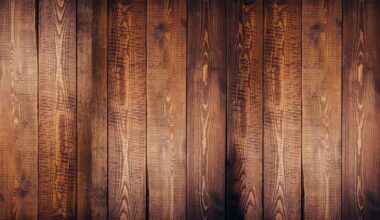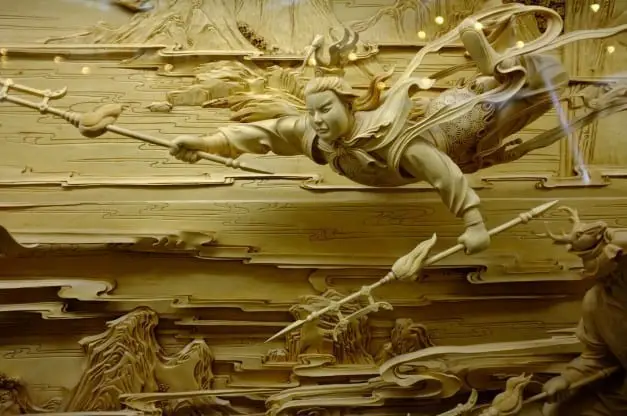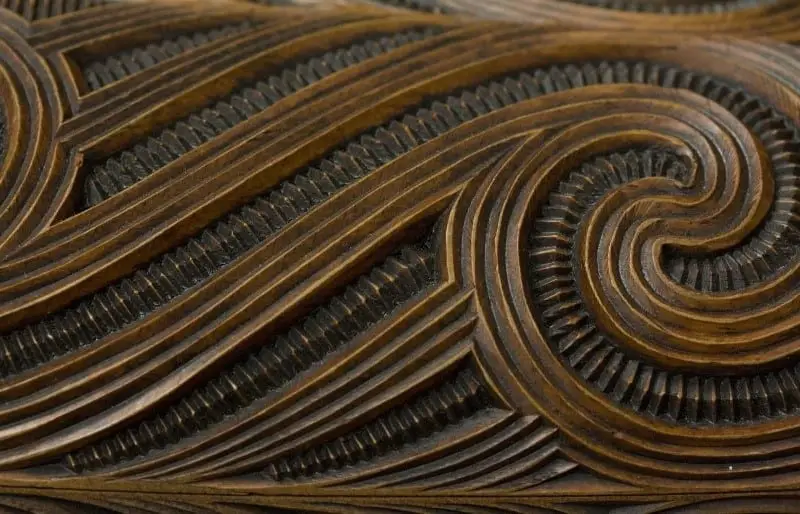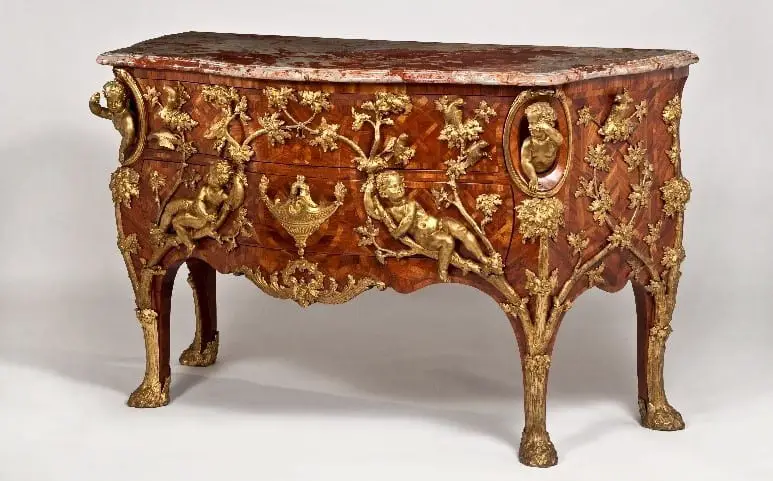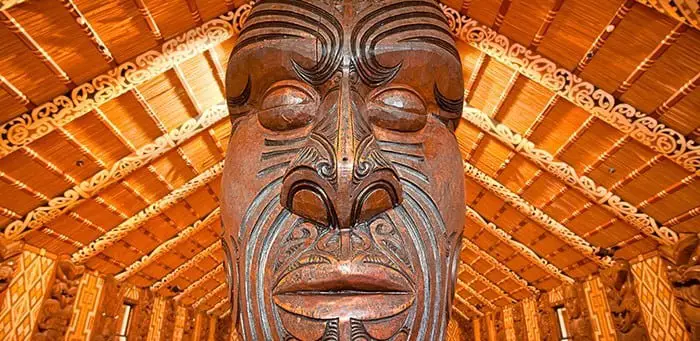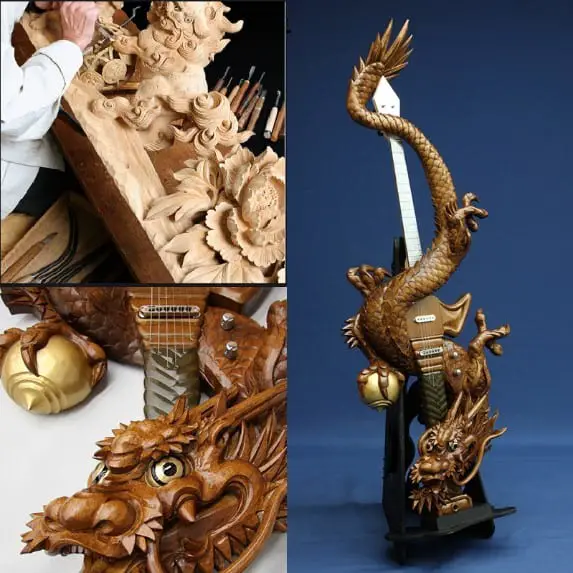
Female figure (moai papa), Easter Island. – Image Source
Polynesians are among the nations which have highly valued and used wood as an intricate part of their life. Looking back at the spectacular examples of wooden masterpieces is like peeking behind the veil of time.
And indeed, Polynesians were not simply masters of working with wood. Instead, there is a deep culture behind wood as a precious and sacred material, starting from the building of wooden canoes, and going all the way through using wood for the creation of utensils, sculptures, and nonetheless – sustainable homes.
Below, we will dive into exploring the art and beliefs of the ancient Polynesians, highlighting the essence, mystery, and craftsmanship of woodworking.
Polynesians: The Great Navigators who Were the First to Reach Hawaii

The very roots of the word Polynesia carry the meaning of “many islands” (translated from Greek, “poly” means “many” and “nesoi” means “islands”).
When it comes to the geographical location, ancient Polynesian lands include an immense area in the east-central Pacific which resembles a triangle. At first, Polynesians settled in the western islands of Wallis, Samoa, Tonga, and Futuna, which happened more than 2000 years ago.
However, up-to-date, approximately 70% of the population of Polynesia inhabit Hawaii. On another note, the first Polynesian sailors reached Hawaii from the Marquesas Islands in approximately 400 C.E.
It took many years before the first Europeans reached the island of Hawaii, with the legendary Captain James Cook in 1778.
Although it’s tempting to think of the Polynesians as lucky to conquer what seems like the exotic Heaven on Earth, the environment of the islands was hostile and challenging for the inhabitants.
But what continues to amaze experts globally are the brilliant navigation skills of Polynesians.
Not only were they able to build reliable canoes for their voyages but they were also able to determine the existence, as well as the location of islands, which were still unsettled, and hence, only a mystery.
The Polynesian navigators used the ancient knowledge about the stars and the sun.
But what’s more, they knew how to observe and interpret the reflections of the clouds, as well as the flight patterns of the birds.
Video by TED-ed – How did Polynesian wayfinders navigate the Pacific Ocean? –
Source: youtube.com
Woodworking in Polynesia: More Than Just a Way of Living
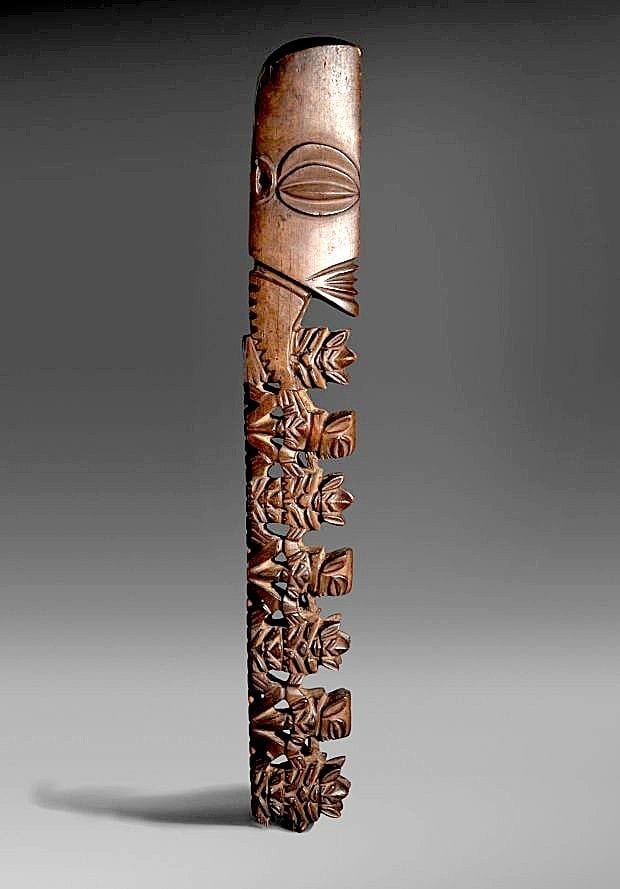
Image Source – Sacred Gods from Polynesia – The Saint Louise Art Museum Exhibit
When we look back at the Polynesian way of living, there is one particular element which can be found in (almost) everything, and this is, undoubtedly, wood.
Firstly, if it wasn’t for the intricate woodworking skills of the ancient Polynesians, traveling to the distant and unknown islands would have been impossible. And that’s because canoes were made out of wood.
Secondly, Polynesians highly relied on the use of wooden utensils in their everyday life.
Thirdly, wood was also used for the creation of various masterpieces, which were intricately connected to the most sacred beliefs of the Polynesians about the Universe and the surrounding environment.
Last but not least, the ingenious homes of the natives were also built out of wood.
The Importance of Wood for Building Homes & Canoes
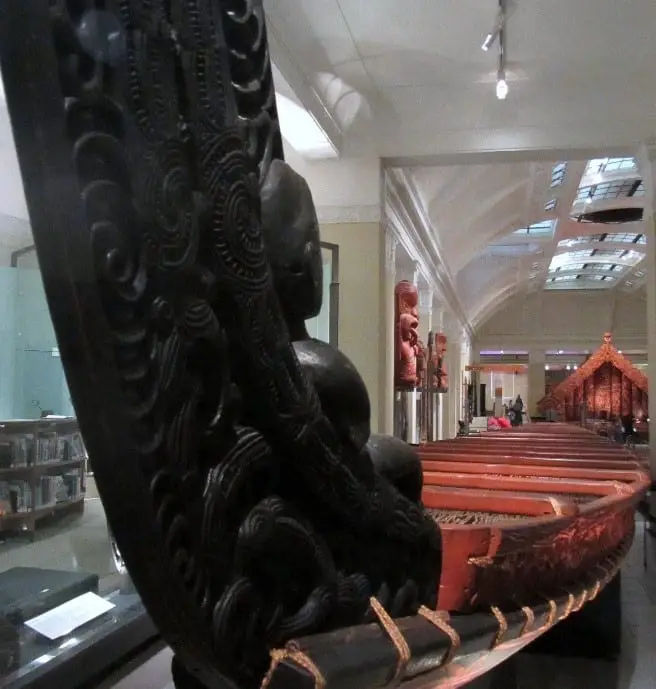
Te Toki ā Tāpiri is a beautiful example of the high mastery behind canoe building of the skillful Polynesian woodworkers. What’s more, this is one of the last war canoes, and it was built quite later on throughout the history of Polynesia – in 1836.
Te Toki ā Tāpiri is 25 meters long and was capable of carrying 100 people on board. Above all, this great canoe is intricately carved, just like most of the wooden objects created by the Polynesians.
Thus, carving wood was much more than what meets the eye at the very first sight. It’s not merely a decoration but a signature of the natives, as well as a way to bring magical powers to the wooden object through the human thought.
When it comes to the homes of the native Polynesians, then again, wood was a key factor.
Partially, that’s because of the fact wood is a natural material, which is abundant in the islands.
Thus, for example, the roofs and the walls of a traditional Polynesian house utilized the bark of various trees in order to be covered, and hence, protected from rains and winds.
What’s even more intriguing is that the culture of building homes in Hawaii just the way that the ancient Polynesians did is coming back to life.
As a result, the tourists can be extremely lucky not only to see examples of the spectacular Polynesian culture and artwork but also to experience what it’s like to sleep in a traditional Polynesian home.
However, it’s also important to mention that most of the traditional style built Polynesian houses for tourists do provide their guests with luxurious comforts of the modern-day life.
Video by Sotheby’s International Reality – Traditional Polynesian Home with Modern Comforts in Fare, French Polynesia
Source: youtube.com
Wooden Utensils
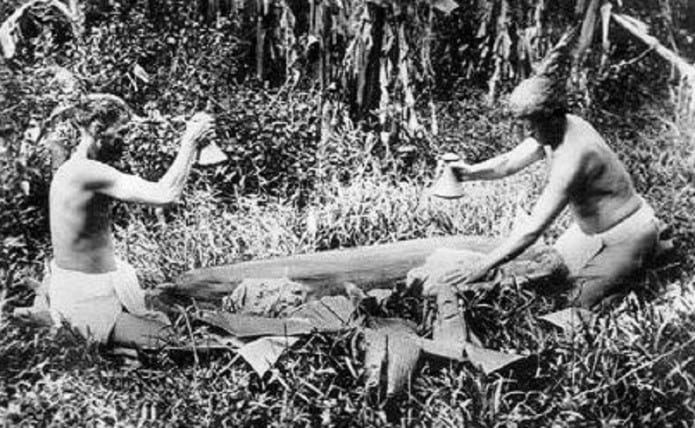
The making process of Poi using Breadfruit on a large wooden pounder board – Image Source
For a start, in every ancient nation, as well as in modern-day society, food has and will always have a special place as part of the culture.
When it comes to Polynesians, and in particular those who inhabited the island of Hawaii, for instance, pounding boards were made out of solid, heavy wood. Pounding boards were used for the making of poi – a traditional starchy local food, which is made out of taro root.
Video by Where Traveler – Hawaiian Culture Video: The Tradition of Poi Making
Source: youtube.com
Interestingly, the natives used bamboo in order to make knives. And indeed, this was a very smart move because bamboo significantly eased the making process of the knives. Moreover, the knives ended up sharp and lightweight.
On another note, storing and serving food was also an important part of the life in ancient Polynesia. Then again, wood was a great material for the production of wooden containers, as well as bowls.
The natives understood very well that not all types of wood could work well for storing and serving food, mostly due to the repeated wetting of the utensils. Thus, they used milo or kou wood, which was less prone to cracking as a result of the daily contact with water.
Nevertheless, special wooden platters were crafted with a mind to serving meat.
All of these examples of the wooden utensils in the life of Polynesians help us understand how wise, deep, and selective the natives’ culture of wood was. They even used smart wooden covers to keep the flies away from the food.
On another note, Polynesians also knew how to make use of other natural materials which they had available, apart from wood. These included stone, lava, cone shells, and shark teeth, among others.
The Notorious Tiki Culture

In Hawaii, tiki is known as ki’I, and this term refers to the art of carving large humanoid sculptures out of wood or stone. Moreover, examples of Tiki artwork date back thousands of years ago.
Fortunately, the hands of time couldn’t damage inevitably these examples, as they were made out of stone.
Nowadays, the very mention of tiki brings associations of the popular modern versions of this ancient art. Tiki bars, tiki cocktails, tiki furniture, and even tiki-themed parties keep being extremely popular in the West.
Even though the exotic sense of the magnificent Tiki artwork vivids the imagination of Western society, it’s important to realize that the essence of this one-of-a-kind art is hidden in depicting the mighty Polynesian gods.
Thus, the real tiki culture is sacred, as it is intricately connected to the most intimate beliefs of the natives.
Woodworking Tools in Polynesia: Putting Will and Patience to the Test
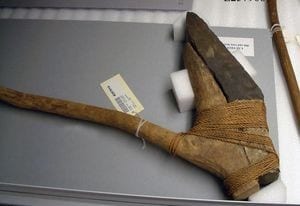
Image Source – An example of a hafted adze, collected by Nathaniel Emerson
The most common tools in ancient Polynesia were none other but the adzes. First things first, it’s essential to understand that Polynesian adzes did not serve the purpose of chopping wood.
Instead, adzes were used in order to plane the wood by shaving off only small pieces at a time. As a result, woodworkers could shape the wood in beautiful shapes and patterns.
But why did the adzes put the will and patience of the natives to the test? In brief, before the arrival of the Westerners, Polynesians did not have access to iron. Thus, the mere process of creating their adzes was very time-consuming.
Moreover, it required a huge dose of patience and mastery, as the lava rocks used in the process of making adzes turn out to be a quite delicate material.
To illustrate this, lava rocks have different mineral content. As a result, the structure of lava rocks can be very tricky. On the one hand, it can be porous and crumbly. On the other hand, it can be extremely hard and dense.
Another popular woodworking tool in ancient Polynesia was the chisel. Chisels were especially useful for the building of canoes. It was thanks to the power of the chisel that the natives were able to cut holes, and subsequently, lash the canoe together.
The Amazing Wooden Sculpture of god A’a: Where the Ancient Beliefs Merge with Nowadays Reality
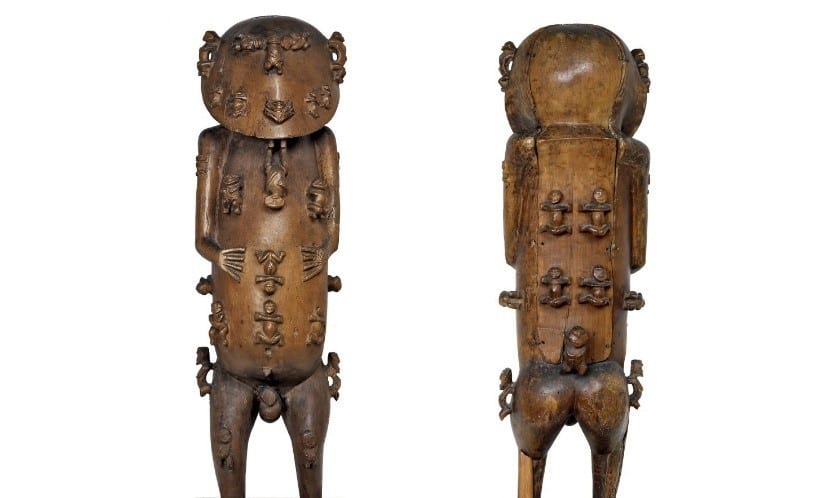
Image Source – The unique wooden sculpture of god A’a
It was in 1821 when islanders from the Austral Islands in French Polynesia sailed to the Society Islands along with the wooden sculpture of the antique god A’a.
Upon arrival, they handled the invaluable sculpture to the London Missionary Society. Moreover, this was not an ordinary act of hospitality or goodwill. Instead, by giving the sculpture of god A’a, the natives wanted to mark the beginning of a new era: their conversion to Christianity.
It wasn’t before 2016 that the incredible wooden sculpture was subjected to thorough investigation, thanks to the advanced technologies of the 21st century.
Amazingly, it turned out that the sculpture of god A’a had a much deeper value than the symbolic transition to Christianity. This ancient artifact is considered to be approximately 5000 years old, which is why the British Museum stated “This is much earlier than had been anticipated… []”
And what’s more, researchers, scientists, and experts of all levels were astonished by the fact that god A’a’s sculpture has survived throughout such a wide time frame, keeping in mind that it is made out of wood.
Nonetheless, the ancient sculpture was crafted without the help of Iron by using only natural materials, some of which include bones and teeth.
As if being able to travel back in time, gazing at the intricate details of the unique wooden sculpture of god A’s makes one wonder – are we really so much different than the ancient civilizations when it comes to the most sacred aspect of life – our Faith?
The Bottom Line
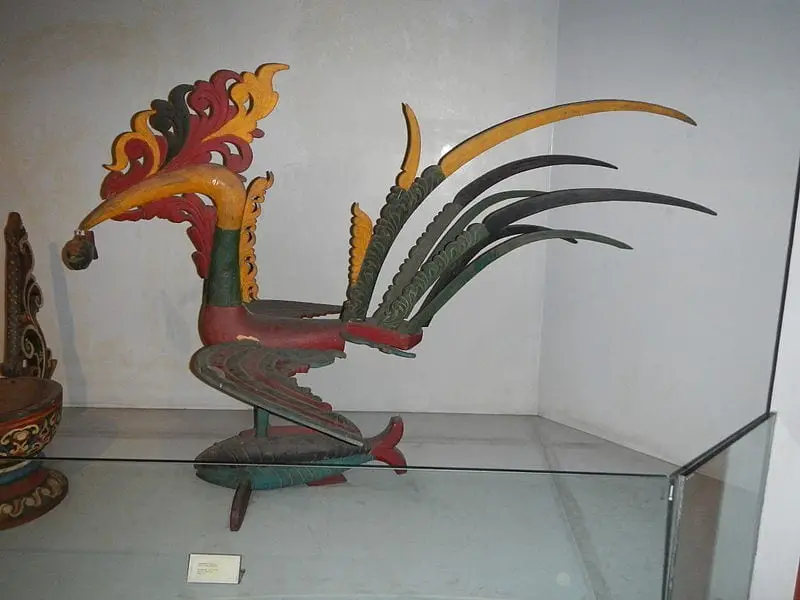
Image Source – Wood carving from the Maranao people, native to the island of Mindanao – Sarimanok – The Bird King
The legend about Sarimanok – the Bird King – originates from Mindanao island. Interestingly, Sarimanok is actually derived from another totem bird of the Maranao people – the Itotoro. Itotoro is a medium of the spirit world through its twin bird – Inikadowa.
Thus, the beliefs of the ancient Polynesians when it comes to the secrets of the Universe resemble the foundation of each religion throughout the globe – there are Hell and Heaven, Seen and Unseen, Black and White, Above and Below – and the opposites create reality as we know it.
Most importantly, the culture of wood in Polynesia tells legends, reveals secrets, highlights sacred beliefs, and ultimately – gives us the chance to feel the life of ancient Polynesians in its truest form.
Thousands of years may pass but the wisdom of our ancestors will not fade, and a huge part of this wisdom is forever embedded in the materials they used to build the life of their dreams.
“Aloha is the unconditional desire to promote the true good of other people in a friendly spirit out of a sense of kinship.”
Abraham Akaka
